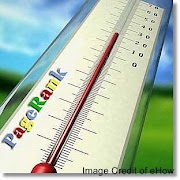The new frontier of outdoor advertising is the digital billboard. These amazing devices have the ability to communicate with enormous numbers of people while still maintaining complete flexibility in messaging and presentation. They can even do animations or display video.
What Are Digital Billboards?
Digital billboards are enormous arrays of energy efficient LEDs, or light-emitting diodes. They are more than bright enough to be seen by the casual observer in the middle of the day, yet they are so efficient at turning electricity into light without generating much waste heat that they can run on very modest power supplies. Since the billboard is made up of LEDs in a enormous grid pattern, damage to the grid and burnt out diodes can be replaced with only trivial effort.
What Can Digital Billboards Accomplish?
Digital billboards are essentially enormous television that projects images dozens of feet across. They can catch the eye from a mile away, and text displayed on them can easily be read by a passing car.
Special Features of Digital Billboards
Digital billboards have been carefully designed with the consumer in mind. They are waterproof, wind resistant, and capable of running off of the ordinary power grid. The panels are equipped to "plug and play," which means that they can be controlled with an ordinary computer. They are also meant to "daisy chain," which means that they can be connected together and utilized in any number of configurations. Images can easily be transferred from one to the other, and it is easy to use them as a continuous display of truly unlimited size. Once they have been loaded with images to play, whether still or video, then they can be programmed to play in whatever sequence the customer may desire.
How Do Digital Billboards Compare to Traditional Billboards?
Traditional billboards are about as modern as painting an ad on the side of a barn. Digital billboards have every conceivable advantage, from versatility to visibility at night to the ability to display moving pictures, but there are two advantages to the traditional billboard that cannot be overcome. Traditional billboards do not have to use electricity, although nearly all of them are lit at night with obsolete bulbs that are far more wasteful of electricity and heat than LEDs. They also weigh less, although structural integrity and the ability to resist weather without damage are far more essential than simple reduction of bulk. Digital billboards are an evolutionary leap above the traditional ones in practically every other conceivable way.











0 Comments
Have a thought? Please leave a comment here, and I will return as soon as possible. Thanks - If you have a minute, why not check-out the sibbling of Self Sagacity.com Blogger Broadcast. Extra Links = Spam = Delete.